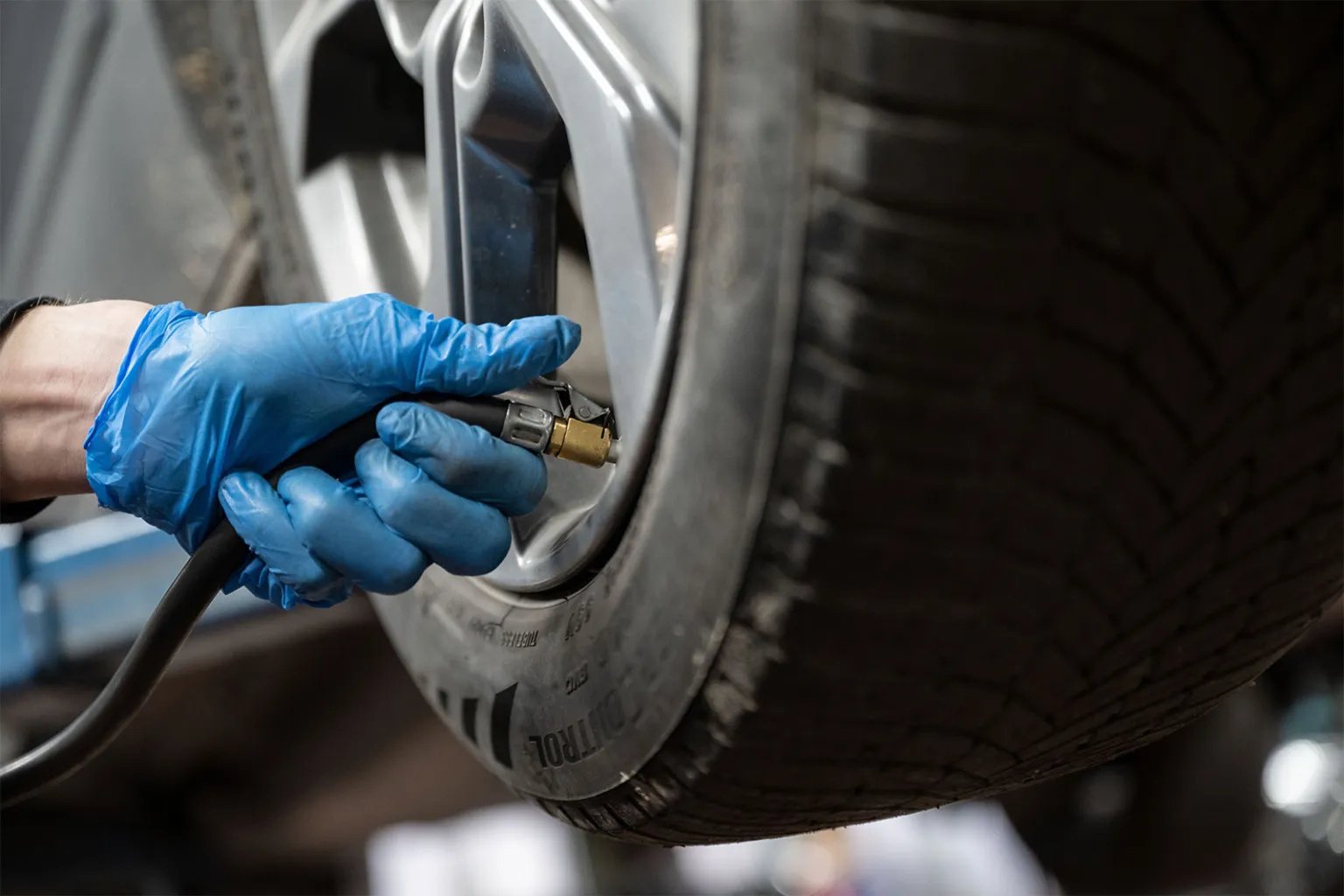Reducing Environmental Impact: A Diy Catalytic Converter Repair Guide
Reduce your environmental impact with a DIY catalytic converter repair guide. Discover how to fix your catalytic converter and protect the environment in just a few simple steps.
Catalytic converters play a vital role in minimizing harmful emissions from vehicles. However, over time, these converters can become clogged or damaged, resulting in reduced efficiency and increased pollution. Rather than immediately replacing your catalytic converter, you can attempt a DIY repair that is cost-effective and environmentally friendly.
This guide will provide you with step-by-step instructions on how to diagnose and fix common issues with your catalytic converter, allowing you to reduce your environmental impact and extend the lifespan of this crucial component. By taking a proactive approach to maintaining your catalytic converter, you can contribute to a cleaner and healthier planet.
The Importance Of Catalytic Converters
Reducing Environmental Impact: A DIY Catalytic Converter Repair Guide highlights the essential role of catalytic converters in minimizing harmful emissions from vehicles. By efficiently converting harmful gases into less harmful substances, catalytic converters play a crucial role in protecting our environment and improving air quality.
Reducing Emissions
Catalytic converters are specifically designed to reduce the emissions of harmful pollutants from vehicle exhaust. These pollutants, such as carbon monoxide, nitrogen oxides, and hydrocarbons, contribute to air pollution and global warming. By using a combination of precious metals, such as platinum, rhodium, and palladium, catalytic converters facilitate chemical reactions that convert these harmful gases into less harmful substances, like carbon dioxide, nitrogen, and water vapor.
Legal Requirements
Not only are catalytic converters crucial for reducing emissions, they are also mandated by law in many countries. Governments and environmental agencies have recognized the importance of catalytic converters in protecting public health and the environment. Therefore, it is vital for vehicle owners to ensure that their catalytic converters are functioning properly and meet legal requirements. Failure to comply with these regulations can result in fines and penalties.
Regular maintenance and timely repair of catalytic converters not only help to reduce emissions and comply with legal requirements, but it also contributes to a healthier and cleaner environment for all. By taking care of this important vehicle component, we can actively participate in reducing our environmental impact and making a positive difference in our communities.
Signs Of Catalytic Converter Damage
Damaged catalytic converters often exhibit symptoms such as decreased engine performance, rattling noises, and a sulfuric smell from the exhaust. If you suspect your converter is faulty, a DIY repair guide can help reduce its environmental impact. Follow simple steps to fix the issue and minimize pollution.
Check Engine Light
If you’ve noticed the dreaded check engine light illuminating on your dashboard, it could be a sign of catalytic converter damage. The check engine light is a warning signal from your vehicle’s onboard diagnostic system, indicating that something is not functioning correctly. When it comes to the catalytic converter, the check engine light is often triggered by issues such as a faulty oxygen sensor or a deteriorating catalytic converter itself. Ignoring this warning can lead to further damage and potentially costly repairs.
Decreased Performance
If your vehicle’s performance has taken a nosedive recently, a malfunctioning catalytic converter could be to blame. A faltering catalytic converter can restrict the flow of exhaust gases, causing decreased engine power and efficiency. You may experience sluggish acceleration, difficulty reaching higher speeds, or even stalling. Additionally, a damaged catalytic converter can also lead to increased fuel consumption, as the engine works harder to compensate for the lack of efficient exhaust gas emission.
Diy Catalytic Converter Repair
Fixing a catalytic converter issue at home can not only save you money but also reduce the environmental impact associated with purchasing a new converter. DIY catalytic converter repair empowers you to play an active role in sustainable automotive maintenance. Read on for a comprehensive guide to identifying issues, selecting the right repair materials, and step-by-step repair instructions.
Identifying The Issue
- Step 1: Start by examining the converter for visible damage such as dents, cracks, or rust.
- Step 2: Use a diagnostic tool to identify if the catalytic converter is the source of the problem. Look out for fault codes related to the converter.
- Step 3: Check for performance issues such as reduced engine power or unusual exhaust smell.
Choosing Repair Materials
- Material 1: Catalytic converter patch kit
- Material 2: Metal putty
- Material 3: Heat-resistant tape
Step-by-step Repair Guide
- Step 1: Begin by cleaning the damaged area of the converter using a wire brush and cleaning solvent.
- Step 2: Apply the metal putty to seal any visible cracks or holes in the converter.
- Step 3: Use the heat-resistant tape to reinforce and secure the repaired areas.
- Step 4: Allow the repair to dry and cure according to the instructions provided with the repair materials.

Credit: mycar.repair
Environmental Impact Of Catalytic Converter Repair
The repair and maintenance of catalytic converters have a significant impact on the environment.
Reducing Pollution
Repairing catalytic converters reduces harmful emissions into the atmosphere.
- Prevents the release of toxic gases
- Improves air quality
- Protects the environment from pollution
- Promotes healthier living conditions
Sustainability Benefits
Repairing catalytic converters contributes to a more sustainable environment.
- Extends the lifespan of the converter
- Reduces the need for new materials
- Decreases waste generation
- Supports eco-friendly practices
Legal And Safety Considerations
This DIY guide provides legal and safety considerations for reducing environmental impact by repairing your catalytic converter. Take the necessary precautions and follow step-by-step instructions to minimize harm to both the environment and yourself.
Legal and Safety ConsiderationsRegulatory Compliance
Adhering to regulatory requirements is crucial when repairing catalytic converters. Ensure compliance with local, state, and federal laws to avoid fines and penalties.
Safety Precautions
- Wear protective gear such as gloves and goggles.
- Work in a well-ventilated area to avoid inhaling fumes.
- Handle chemicals with care and dispose of them properly.
- Use fire safety equipment in case of emergencies.

Credit: www.nationalobserver.com

Credit: mycar.repair
Frequently Asked Questions For Reducing Environmental Impact: A Diy Catalytic Converter Repair Guide
How Do You Protect A Catalytic Converter Diy?
To protect a catalytic converter DIY, you can use a few strategies. Firstly, park in a secure and well-lit area. Secondly, install a catalytic converter shield or cage. Thirdly, engrave your vehicle identification number (VIN) on the converter. Lastly, use a security alarm or surveillance system.
Regular maintenance and inspections are also vital.
Can You Fix A Catalytic Converter Yourself?
No, it’s best to have a professional fix your catalytic converter. Self-fixing can lead to further damage and improper repairs.
How Can I Make My Catalytic Converter Work Better?
To make your catalytic converter work better, use high-quality fuel and keep up with regular maintenance. Avoid rough driving habits that can damage the converter.
What Are The Environmental Impacts Of Catalytic Converter Malfunctions?
Catalytic converter malfunctions can lead to increased emissions, harming air quality. They release pollutants like CO, NOx, and hydrocarbons, impacting the environment negatively.
Conclusion
Repairing a catalytic converter can help reduce emissions and environmental impact. By following this DIY guide, you can save money and contribute to a cleaner planet. Remember to dispose of old converters properly and seek professional help if needed. With these simple steps, you can make a meaningful difference.

